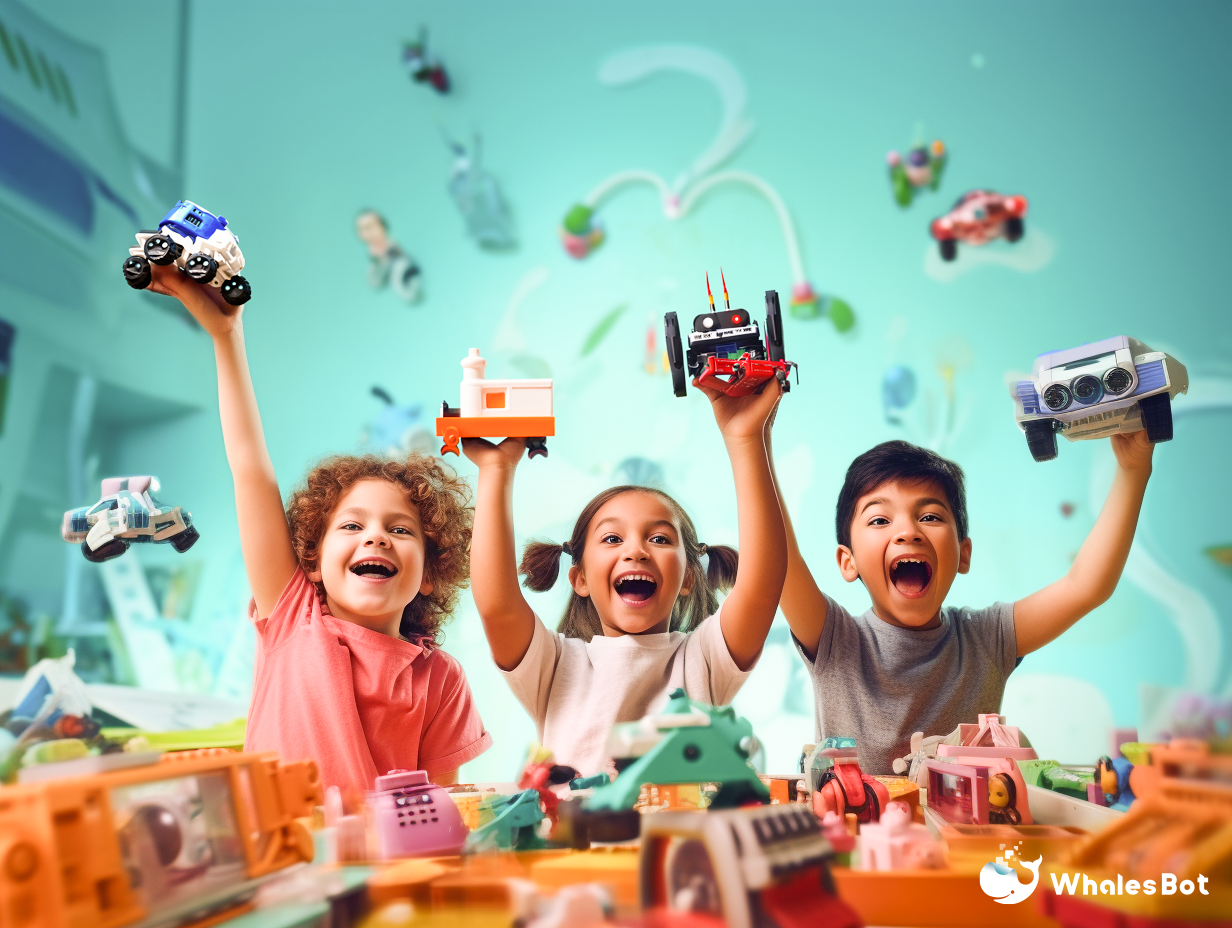Introduction
The STEM toys industry has undergone a remarkable evolution in recent years, driven by the increasing emphasis on STEM education and the integration of robotics and coding into educational curricula. Parents and educators are recognizing the importance of preparing children for the digital age, and robotic toys have emerged as powerful tools for fostering critical skills such as problem-solving, creativity, and logical thinking. In this article, we will explore the best practices in the kids STEM toys industry that promote STEM education, robotics, and coding. From selecting age-appropriate toys to integrating coding concepts into playtime, we'll provide valuable insights for parents, educators, and anyone interested in nurturing a child's interest in robotics.
The Role of STEM Education in the Kids STEM Toys Industry
STEM education, which stands for Science, Technology, Engineering, and Mathematics, has gained significant traction in modern education systems. In the context of the kids robotic toys industry, STEM education serves as the foundation for fostering a child's interest in robotics and coding. By integrating STEM principles into playtime, children are exposed to real-world problem-solving scenarios, hands-on experimentation, and logical reasoning. Best practices in this regard involve selecting robotic toys that encourage exploration, experimentation, and critical thinking. These toys should allow children to engage in open-ended play, enabling them to develop problem-solving skills while having fun.
Age-Appropriate Robotic Toys
Matching Complexity with Cognitive Development
When it comes to robotic toys, it is crucial to choose age-appropriate options that align with a child's cognitive development. Younger children may benefit from toys that introduce basic concepts of robotics and coding in a playful and interactive manner. These toys can focus on building motor skills, spatial awareness, and cause-and-effect relationships. For example, coding robots with simple commands or building blocks that can be assembled into basic structures. As children grow older, they can be exposed to more advanced robotic toys that involve coding activities, assembly, and programming. This progression allows them to develop their skills at an appropriate pace, building upon their previous knowledge and experiences. By matching the complexity of the toys with the child's cognitive abilities, parents and educators can ensure an engaging and rewarding experience.
Integrating Coding Concepts into Playtime
Coding has become a critical skill in today's digital age, and incorporating coding concepts into playtime with robotic toys can be highly beneficial. Best practices in this area include selecting toys that introduce coding concepts in a simplified manner. For younger children, screen-free toys that utilize physical components like blocks or cards can teach basic programming logic. These toys allow children to arrange and sequence the components to create simple commands and observe the outcomes. Older children can explore more advanced coding concepts through toys that connect to digital platforms or offer visual programming interfaces. These toys provide opportunities for children to engage in coding exercises, control the robots' movements, and even program more complex behaviors. By integrating coding into playtime, children develop computational thinking, problem-solving abilities, and a solid foundation for future technological literacy.
Collaboration and Cooperative Play with Robotic Toys
In addition to individual learning, robotic toys can facilitate collaboration and cooperative play among children. Many robotic toys offer multiplayer modes or cooperative challenges that encourage teamwork and communication. These features allow children to work together to solve problems, complete tasks, or achieve common goals. By engaging in collaborative play, children learn important social skills, such as effective communication, negotiation, and teamwork. These skills are essential for future success in the digital workplace, where collaboration and interdisciplinary problem-solving are highly valued. Encouraging collaborative play with robotic toys not only enhances children's social skills but also fosters a sense of camaraderie and shared achievement.
Personalizing Learning Experiences
Every child is unique, and their personalized learning experiences are crucial for maximizing their engagement and growth in the robotic toys industry. Best practices involve recognizing and accommodating each child's skill level, interests, and learning style.
Assessing Skill Level
To provide personalized learning experiences, it is important to assess a child's skill level in robotics and coding. This can be done through observation, informal assessments, or even formal evaluations. Understanding a child's current abilities and knowledge allows parents and educators to select appropriate robotic toys that challenge and inspire them. For beginners, introductory toys that focus on basic concepts and provide guided learning can be beneficial. Intermediate learners may benefit from more complex toys that require problem-solving and logical thinking. Advanced learners can explore advanced programming concepts and engage in projects that encourage creativity and innovation.
Tailoring Interests
Children are more likely to be engaged and motivated when they have a personal interest in the subject matter. Best practices involve identifying a child's interests and selecting robotic toys that align with those interests. For example, if a child is interested in space exploration, selecting a coding robot that simulates space missions can ignite their curiosity and passion. By incorporating their interests into the learning process, children are more likely to be enthusiastic, actively participate, and develop a deeper understanding of the subject matter.
Adapting Learning Styles
Children have different learning styles, such as visual, auditory, or kinesthetic. Best practices involve considering these learning styles when selecting robotic toys and designing learning activities. Visual learners may benefit from toys that provide visual feedback or require them to follow visual instructions. Auditory learners may prefer toys that provide audio cues or explanations. Kinesthetic learners may thrive with hands-on toys that allow them to physically interact and manipulate objects. By adapting learning experiences to match a child's preferred learning style, their comprehension and retention of concepts can be enhanced.
Continuous Learning and Progression
The learning journey in the robotic toys industry is not a one-time event but a continuous process of growth and development. Best practices involve providing opportunities for continuous learning and progression. This can be achieved by introducing new challenges, expanding the complexity of coding activities, or exploring different areas of robotics. For example, after mastering the basics of coding, children can progress to more advanced programming languages or engage in robotics competitions. By offering a progression path, children can build upon their existing knowledge and skills, fostering a sense of achievement and continuous learning.
Collaboration between Parents and Educators
To ensure the best learning outcomes, collaboration between parents and educators is crucial. Parents can provide valuable insights into a child's interests, strengths, and areas of improvement, while educators can offer expertise in curriculum integration and learning strategies. By sharing information and working together, parents and educators can align their efforts and create a supportive learning environment that maximizes the benefits of robotic toys in STEM education and coding.
Conclusion
In the ever-evolving kids robotic toys industry, adopting best practices that prioritize STEM education, robotics, and coding is crucial for nurturing children's interest in these fields. By selecting age-appropriate toys, integrating coding concepts into playtime, promoting collaboration, personalizing learning experiences, and fostering collaboration between parents and educators, we can create a strong foundation for children's future success. The robotic toys industry plays a vital role in shaping the next generation of innovators, problem solvers, and technologically literate individuals. Through these best practices, we can inspire and empower children to become lifelong learners and contributors to the exciting world of robotics and coding.




.png)

